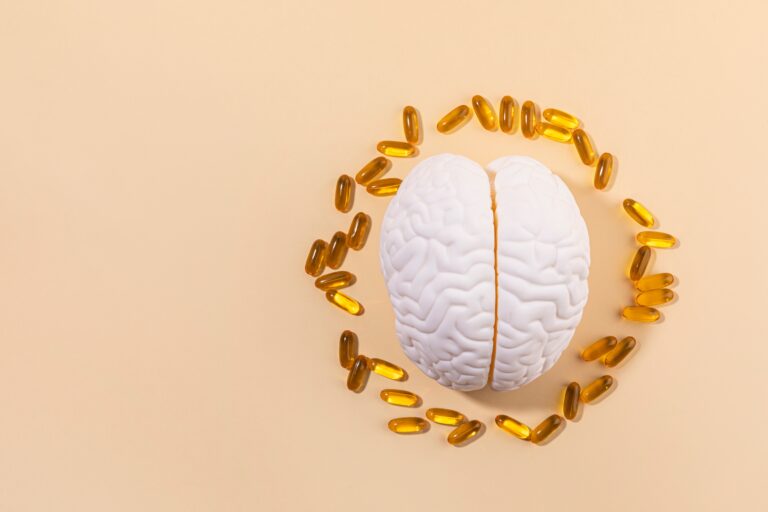Think Zinc for Healthy Cells
Think Zinc for Healthy Cells
Zinc From Dietary Sources
Zinc is found in a variety of foods, including both animal and plant sources. Oysters contain the most zinc per serving, followed by red meat, crab, and lobster. Whole grains, fortified breakfast cereals, and dairy products also provide zinc. Consumption of a diverse, healthy diet can easily achieve the recommended dietary allowance (RDA) for zinc.
The RDAs for zinc are as follows:
- Children 0-6 months*: 2 mg (*Adequate Intake, not RDA)
- Children 7 months- 3 years: 3 mg
- Children 4-8 years: 5 mg
- Children 9-13 years: 8 mg
- Males 14+ years: 11 mg
- Females 14-18 years: 9 mg
- Females 19+ years: 8 mg
- Pregnancy 14-18/19+ years: 12 mg/11 mg
- Lactation 14-18/19+ years: 13 mg/12 mg
Zinc Deficiency
Severe zinc deficiency is rare; mild to moderate deficiency is much more common.1 Zinc deficiency is the fifth leading cause of mortality and morbidity in the developing world, affecting approximately one-third of the global population.1 Signs of zinc deficiency include growth retardation due to decreased insulin-like growth factor 1, loss of appetite, and impaired immune function, as well as hair loss, diarrhea, impotence, and skin lesions in severe cases.2,3
While most people in developed countries consume adequate zinc, certain groups of people may be at a higher risk of deficiency including people who have had gastrointestinal surgery or suffer from digestive disorders leading to decreased absorption.2 People who abstain from eating red meats or rely mainly on plant-based foods are also at a higher risk of developing zinc deficiency. Because whole grains and legumes contain phytates, compounds that bind zinc and inhibit its absorption, the bioavailability of zinc from these plant-based foods is lower.
Oral supplements can help fill in gaps in zinc intake, but the bioavailability of zinc varies.1 Chelation of zinc can aid in its absorption and make the metal less reactive. During chelation, a charged mineral salt, such as zinc chloride, will bind to a charged amino acid to form a more stable, less reactive compound. Zinc bound to aspartate, cysteine, and histidine showed the highest absorption followed by zinc chloride, sulfate, and acetate while zinc oxide demonstrated the lowest bioavailability.1 However, careful attention should be paid to interactions between zinc and certain medications including some antibiotics and diuretics. Additionally, excessive zinc intake through zinc-containing nasal sprays or denture creams can lead to nausea, vomiting, loss of appetite, diarrhea, and headaches.3
Zinc Metabolism
Unlike some minerals, the body does not specifically store zinc, making daily adequate consumption vital for proper zinc metabolism.1 Zinc is absorbed in the small intestine and requires specific transporters to get to its final destination. The major zinc transporters are ZIP and ZnT, which are expressed in a tissue specific manner as well as respond to specific stimuli and developmental expression patterns.1 They are localized in specific compartments to maintain proper flux and metabolism.1 Metallothioneins are also important proteins in zinc metabolism with up to 20 percent of intracellular zinc bound to metallothioneins, which allows for its rapid release.1
Function of Zinc
Zinc is the second most abundant micronutrient in the body with approximately two to four grams found throughout the body of an adult.1,4 Most is found in muscles and bones, but it is present in some amount in all body tissues.4 Zinc catalyzes the activity of more than 300 enzymes involved in cellular processes including protein structure and folding, cellular proliferation, and synthesis of RNA and DNA.4,5 Zinc is also a critical component of zinc finger proteins, which bind to nucleic acids and regulate gene expression.4 It is necessary for cellular growth, differentiation, and homeostasis as well as connective tissue growth and maintenance. Zinc is also critical for the proper functioning of the immune system.4
Zinc is an important nutrient for reproduction; levels are 85 to 90 times higher in semen than in blood.5 It is involved in several steps of sperm production and required for normal fertilization.4 Zinc also functions to maintain the lining of reproductive organs and plays a role in the production, storage, and transport of the major sex hormones, including testosterone.4,5 Zinc deficiency during the growth phase can affect the development and maturation of the gonads due to hormonal imbalance.5
Zinc in Diseases
Because zinc is involved in hundreds of cellular processes and diverse metabolic reactions, alterations in zinc metabolism can have serious consequences and contribute to several chronic diseases including diabetes, cancer, and neurodegenerative diseases.1
Zinc in obesity and diabetes
Several studies have found an association between zinc levels and obesity and type 2 diabetes, including significantly reduced blood zinc levels in patients with obesity.6 Plasma zinc concentrations were also negatively correlated with glycosylated hemoglobin levels (HbA1c) in patients with diabetes, indicating zinc deficiency may contribute to glycemia status and metabolic syndrome.6 Low zinc levels in obesity are also associated with aggravation of other metabolic disturbances including insulin resistance, inflammation, and dysregulated lipid metabolism, as well as diabetic complications including increased susceptibility to infections and increased oxidative stress.2,6 Supplementation with zinc has proven beneficial in improving metabolic measures including total cholesterol and LDL cholesterol, as well as leptin levels.6 Zinc supplementation has also been shown to improve glucose metabolism and insulin sensitivity in patients with diabetes.6
The connections between zinc and metabolic disorders are likely related to zinc’s role in inflammation, oxidative stress, and lipid and glucose metabolism. Zinc may also interfere with leptin production, which helps to regulate energy balance in the body by inhibiting hunger.6 Loss of leptin or leptin resistance can have serious metabolic consequences including overeating and severe obesity. Zinc is also required for insulin metabolism; insulin is stored in granules with zinc in pancreatic beta-cells.6 Zinc ions sit at the center of insulin crystal structures and are therefore required for normal function of beta cells and transport of insulin.6 Zinc also inhibits glucagon secretion in response to high glucose levels, which helps keep glucose metabolism properly regulated.6
The role of zinc in age-related macular degeneration
Investigative studies found that the concentrations of zinc were reduced in human eyes that exhibited signs of age-related macular degeneration (AMD), which affects one-quarter of individuals that are older than 65 years.2 Zinc deficiency may lead to oxidative stress and consequently retinal damage. In a clinical trial, supplementation with zinc resulted in a 21 percent decreased risk of developing advanced AMD and an 11 percent reduction in the risk of developing vision loss. Because zinc possesses anti-inflammatory properties, as well as reduces levels of inflammatory cytokines, it may help in reducing the risk of developing AMD in older populations.2
Zinc for Wilson’s disease
Wilson’s disease is an inherited disorder resulting in copper accumulation due to mutations in copper-metabolizing genes. Because zinc competes with copper for binding sites in proteins that metabolize and transport metals, it can decrease the uptake of copper. In fact, zinc acetate is currently an FDA-approved maintenance treatment for patients with Wilson’s Disease.2
Zinc is required in every phase of life to support metabolism throughout the entire body. It is especially important in the activation of enzymes, supporting the immune system, and reducing oxidative stress. Ensuring adequate intake of zinc through a balanced diet will help keep cells healthy and maintain normal metabolic processes.
- Gammoh, N.Z., Rink, L. (2017). Zinc in infection and inflammation. Nutrients, 9(6):624-648.
- Prasad, A.S. (2013). Discovery of Human Zinc Deficiency: Its impact on Human Health and Disease. Adv Nutr, 4(2):176-190.
- Institute of Medicine 2001. Dietary Reference Intakes for Vitamin A, Vitamin K, Arsenic, Boron, Chromium, Copper, Iodine, Iron, Manganese, Molybdenum, Nickel, Silicon, Vanadium, and Zinc. Washington, DC: The National Academies Press. https://doi.org/10.17226/10026.
- Farag, M.A., Hamouda, S., Gomaa, S., Agboluaje, A.A., Hariri, M.L.M., Yousof, S.M. (2021). Dietary micronutrients from zygote to senility: updated review of minerals’ role and orchestration in human nutrition through life cycle with sex differences. Nutrients, 13 (11):3740-3762.
- Vickram, S., Rohini, K., Srinivasan, S., Veenakumari, D.N., Archana, K., Anbarasu, K., Jeyanthi, P., Thanigaivel, S., Goluthungan, G., Rajendiran, N., Srikumar, P.S. (2021). Role of zinc (Zn) in human reproduction: a journey from initial spermatogenesis to childbirth. Int J Mol Sci, 22(4):2188-2204.
- Olechnowicz, J., Tinkov, A., Skalny, A., Suliburska, J. (2018). Zinc status is associated with inflammation, oxidative stress, lipid, and glucose metabolism. J Physiol Sci, 68(1):19-31.







